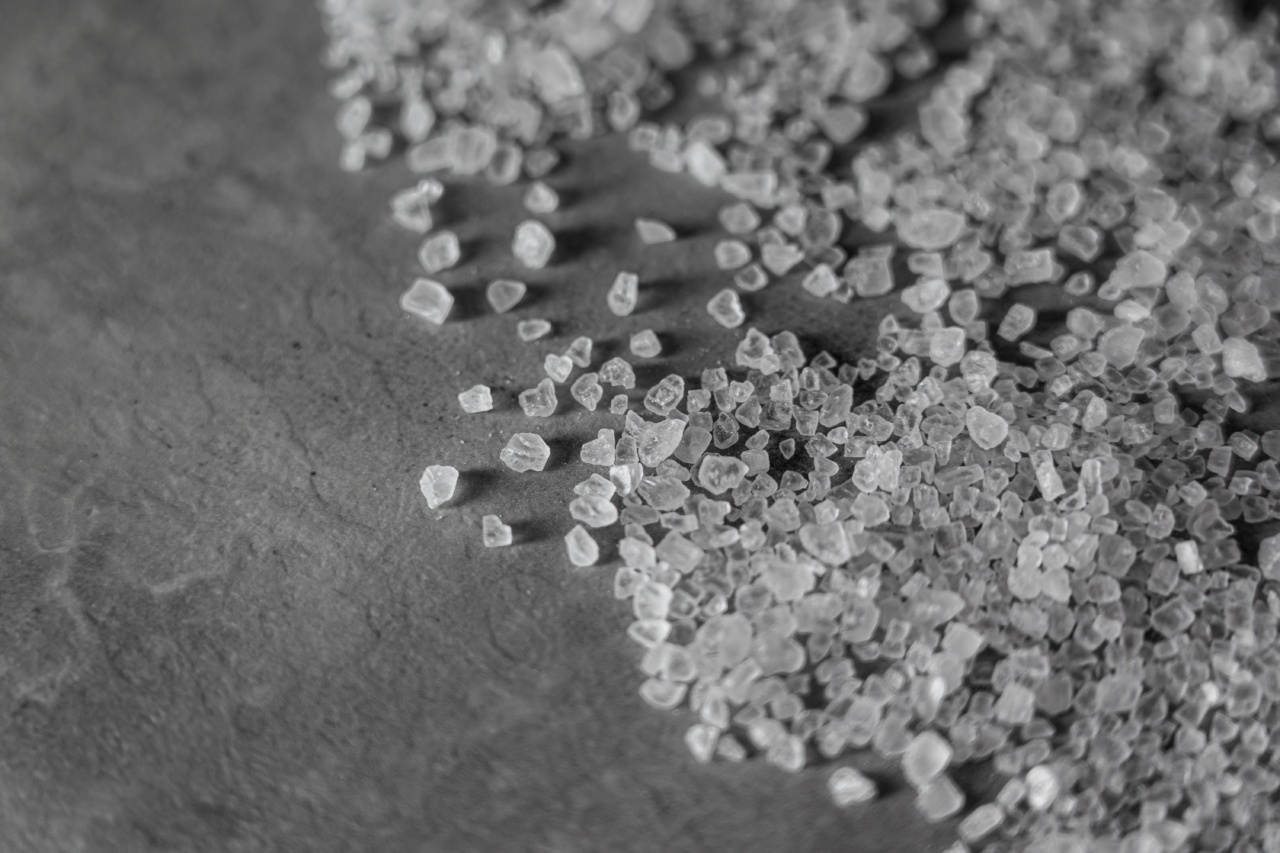Salt is one of the most commonly used ingredients in cooking. It adds flavor to dishes and enhances the taste of foods. However, excessive consumption of salt can lead to high blood pressure, cardiovascular disease, and stroke.
Therefore, it’s important to find healthy salt alternatives to avoid these health problems while still enjoying flavorful meals. Here are ten healthy salt alternatives you can use for cooking:.
1. Black Pepper
Black pepper is a traditional seasoning that has been used in cooking for centuries. It adds a bold, spicy flavor to foods and is commonly used in marinades, rubs, and dressings.
Black pepper is a good substitute for salt because it also enhances the taste of foods and has numerous health benefits, including anti-inflammatory properties, antioxidant activity, and digestive health support. Using black pepper instead of salt can lower your sodium intake, reduce your risk of hypertension, and improve heart health.
2. Herbs and Spices
Herbs and spices are an excellent alternative to salt because they add flavor and aroma to dishes without the harmful effects of high sodium content.
Some popular options include garlic, onions, thyme, rosemary, parsley, oregano, basil, cumin, mustard, and curry. These herbs and spices also have various health benefits, such as reducing inflammation, boosting the immune system, improving digestion, and lowering blood sugar levels.
You can incorporate herbs and spices into your cooking by using them in marinades, sauces, rubs, and soup broths.
3. Apple Cider Vinegar
Apple cider vinegar is a popular condiment that can be used to replace salt in recipes. It adds a tangy, sour taste to dishes and is commonly used in dressings, marinades, and sauces.
Apple cider vinegar also has numerous health benefits, such as promoting weight loss, regulating blood sugar levels, and improving heart health. Using apple cider vinegar instead of salt can reduce your sodium intake and improve your overall health.
4. Lemon Juice
Lemon juice is another healthy salt alternative that can add a citrusy, zesty flavor to dishes. It’s commonly used in marinades, dressings, and sauces and can also be drizzled over cooked vegetables or meat.
Lemon juice is loaded with vitamin C and antioxidants, which can boost immunity, fight inflammation, and protect against chronic diseases. Using lemon juice instead of salt in your cooking can also help lower your sodium intake and reduce your risk of hypertension.
5. Tamari
Tamari is a type of soy sauce that’s made with little or no wheat, making it a good salt alternative for people with gluten sensitivity or celiac disease. It has a rich, salty flavor and can be used in marinades, stir-fries, and dipping sauces.
Tamari is also lower in sodium than regular soy sauce, which makes it a healthier option for people who need to watch their salt intake. Additionally, tamari contains antioxidants and phytonutrients that have been shown to improve heart health and lower inflammation in the body.
6. Nutritional Yeast
Nutritional yeast is a type of deactivated yeast that’s high in protein, fiber, and B-vitamins. It has a slightly nutty, cheesy flavor that makes it a great salt alternative for vegans or people who are lactose intolerant.
Nutritional yeast can be sprinkled on top of popcorn, soups, salads, and roasted vegetables to add a savory, umami taste to dishes. It’s also low in sodium, which makes it a healthier option for people who want to limit their salt intake.
7. Seaweed
Seaweed is a type of sea vegetable that’s high in nutrients and minerals, including iodine, calcium, iron, and magnesium.
It has a salty, savory taste that makes it a great salt alternative for people who want to add flavor and texture to their dishes. Seaweed can be used in soups, stews, salads, and sushi rolls. It’s also a good source of antioxidants and anti-inflammatory compounds, which can improve heart health, boost immunity, and support brain function.
8. Dried Mushrooms
Dried mushrooms, such as shiitake, porcini, or morel, are another healthy salt alternative that can add rich, earthy flavor to dishes. They can be rehydrated by soaking in hot water and then added to soups, sauces, risottos, or pasta dishes.
Dried mushrooms are low in calories and fat but high in fiber, protein, and antioxidants. They also contain vitamins and minerals, such as vitamin D, iron, and selenium, which can boost immunity, support bone health, and improve thyroid function.
9. Coconut Aminos
Coconut aminos are a gluten-free, soy-free alternative to soy sauce that’s made from coconut sap. They have a slightly sweet taste and can be used in marinades, salad dressings, or stir-fries.
Coconut aminos are lower in sodium than regular soy sauce and are also rich in amino acids and minerals, such as potassium, calcium, and magnesium. They can improve heart health, reduce inflammation, and support gut health.
10. Homemade Spice Blends
You can also create your own spice blends at home by mixing different herbs, spices, and extracts together. This allows you to control the amount of sodium and other ingredients you add to your food.
Some popular spice blends include Italian seasoning, Cajun seasoning, curry powder, and chili powder. You can use homemade spice blends in marinades, rubs, or sauces to add unique, flavorful taste to your dishes.
Conclusion
Consuming too much salt can lead to various health problems, such as high blood pressure, heart disease, and stroke. However, with these healthy salt alternatives, you can still enjoy flavorful meals without compromising your health.
Incorporating these ingredients into your cooking can provide a range of health benefits, such as reducing inflammation, boosting immunity, and improving heart health.





























